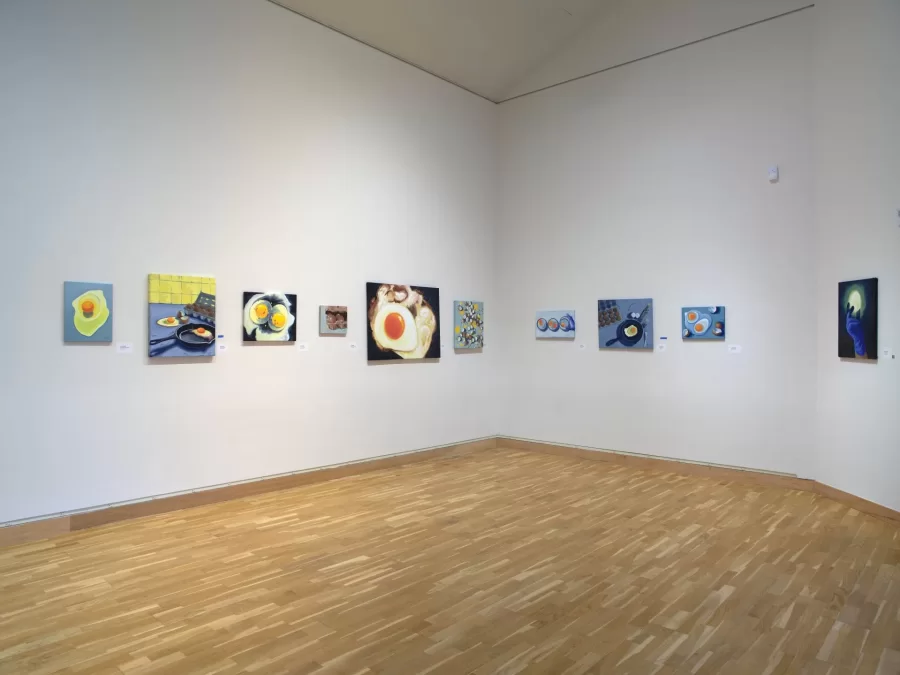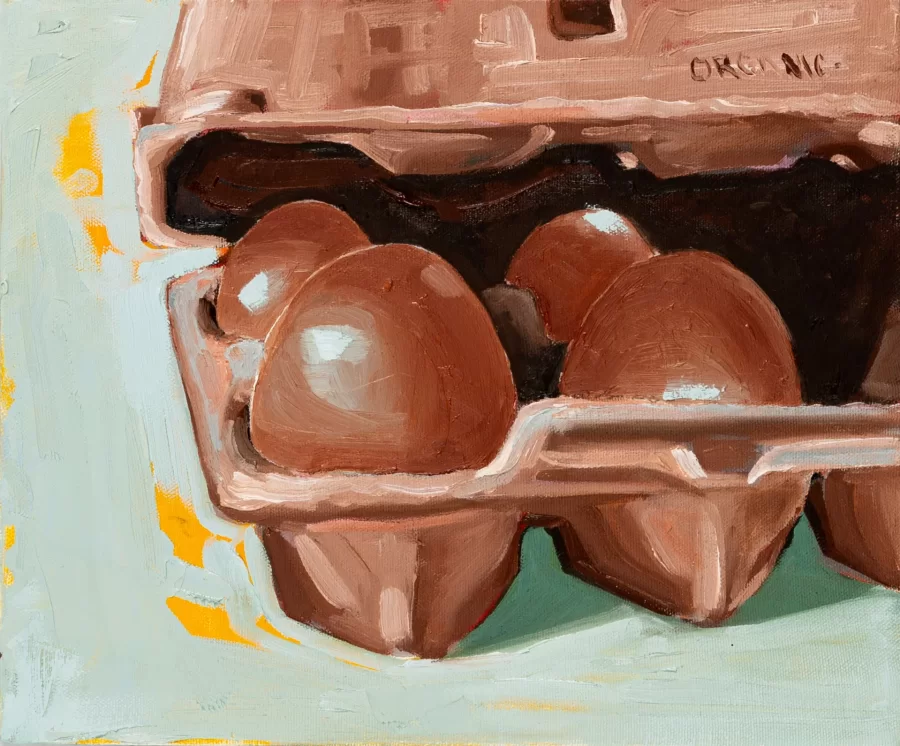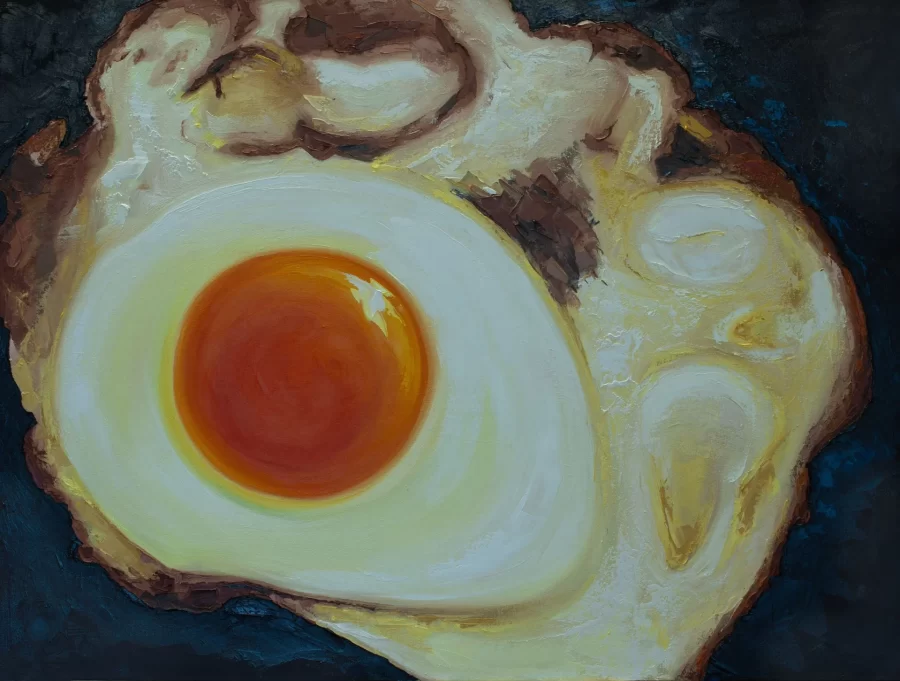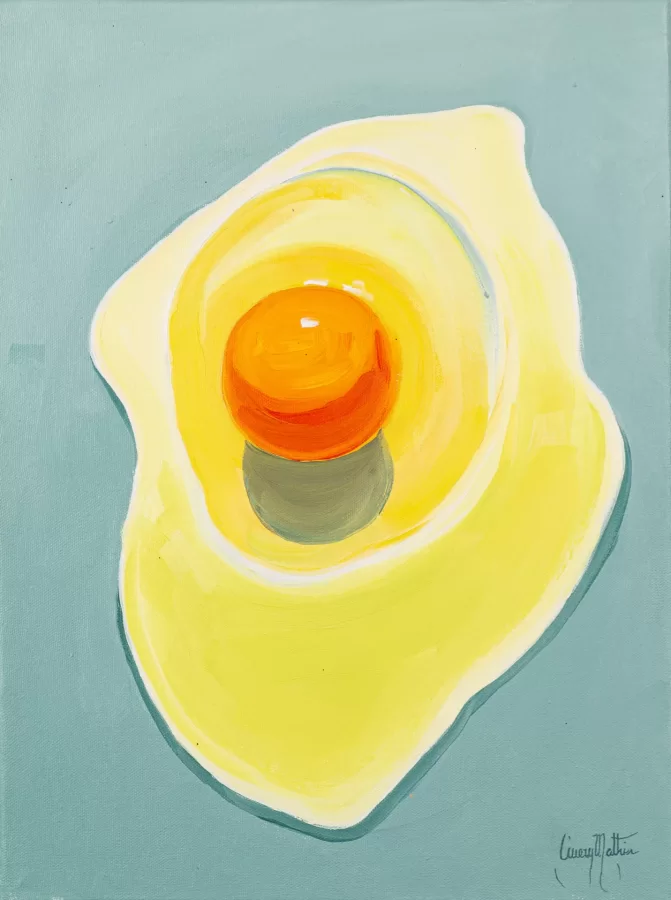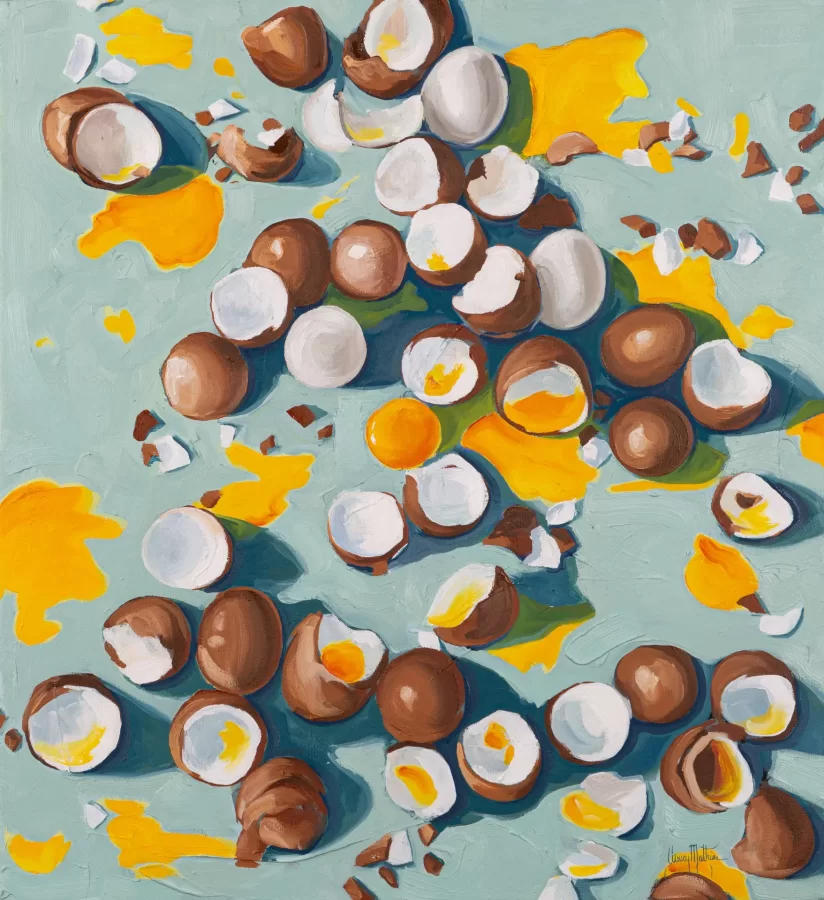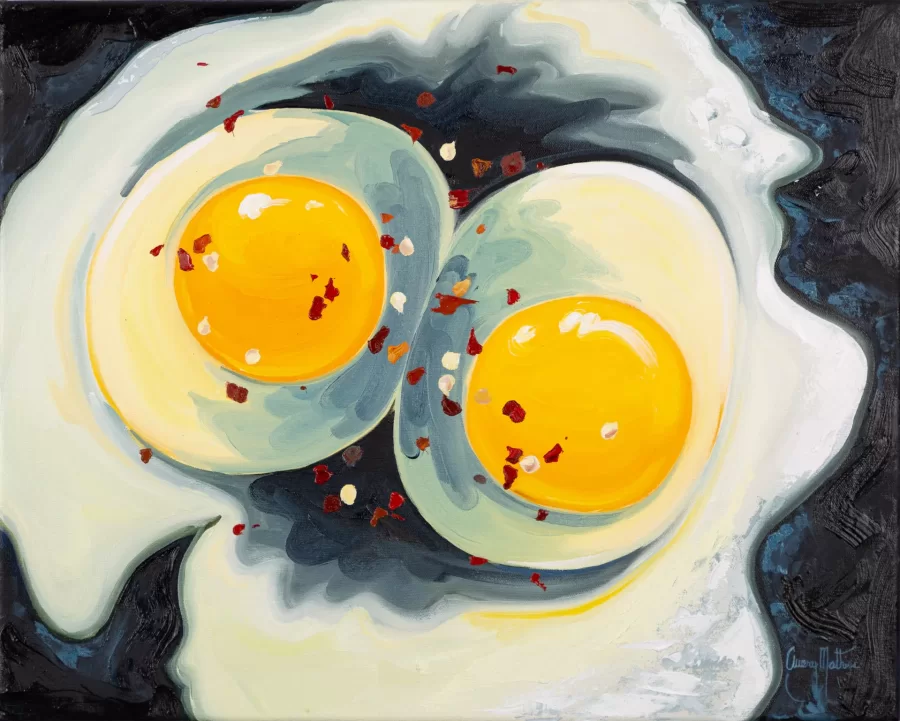Avery Mathias
My body of work seeks to focus on the mundane as a worthy subject matter to explore light, color, and the beauty in the ordinary. I have focused on a single subject—the chicken egg— as it is a universally recognizable object that is often overlooked. Given that the chicken egg is so common, it is accompanied by a variety of connotations that the audience can examine with the work. Combined with the striking contrast of the yellow-orange yolk with egg whites, the chicken egg encapsulates the concept of finding intrigue and beauty in the mundane.
In order to emulate traditional still life painting, I stretched and gessoed the canvases by hand and used oil paint as my medium. While I was inspired by historical still lives by female artists such as Gluck (Hannah Gluckstein), Ethel Sands, and Vanessa Bell, I was also influenced by the modern still life painter Leah Gardner. She is a young, self-taught artist whose work consists of a series of common objects captured with bright colors on a plain background. Her use of light and color inspired me to focus on daily life and the functioning of seemingly insignificant mechanisms which led to my involvement with biology and cooking.
I have particularly fond memories of making breakfast with my father on the weekends as a kid and enjoy food and how a shared meal brings people together. While food and people’s relationship with it comes with a range of emotions and connotations, everyone can recognize and connect to the symbol of a fried egg. In addition to providing valuable nutrition, an egg can symbolize or invite other associations such as life and sexuality. The lack of context included in my work invites the audience to bring their own associations and significance to each piece. The egg is also the epitome of routine as a chicken lays one egg every day and many people consume eggs for breakfast daily. I am also intrigued by the intersection of cooking and science. As a biology major, it is difficult not to find the similarities between cooking and conducting an experiment and I could not help but bring some of my lab work into the studio. To emulate this scientific perspective, I have painted the eggs much larger than life as if the viewer is observing the subject through a microscope. I found reality to be just as, if not more, engaging as the fantastical. To look at an object from a drastically different point of view made it infinitely more intriguing.
I hope the action of looking closely at something that normally does not receive a lot of attention, like an egg, can be interesting to the viewer. I have found that the most engaging subjects can be those we take for granted or overlook due to our familiarity with them. My work has reminded me how beautiful everyday life can be.
